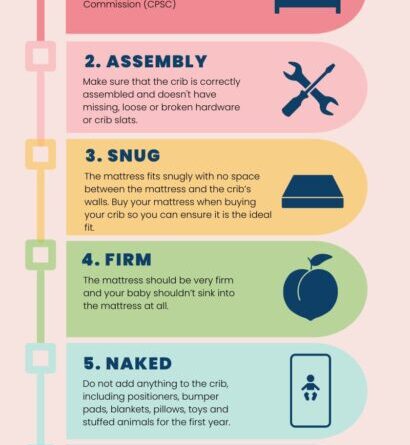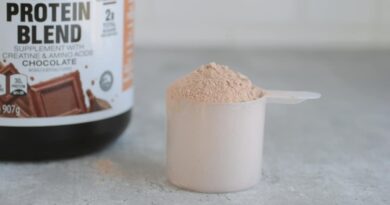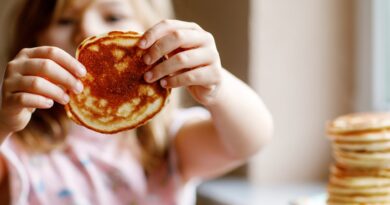What You Need To Know About Crib Safety
Your baby’s safety is #1 for us and I know this is super important to you too! My biggest fear as a new parent was Sudden Infant Death Syndrome (SIDS) and suffocation. While we don’t 100% know exactly what causes SIDS, we do know that there are risk factors that can increase the likelihood. One key thing that you can do is to ensure crib safety in your little one’s sleep environment. The recommendations below will help to make sure that your baby’s crib is safe so you can rest easier at night.
Crib Safety Factor #1: Modern Standards
In 2022, the American Academy of Pediatrics (AAP) Task Force on SIDS issued an updated policy statement about safe sleep, which recommends using a crib, bassinet, portable crib or play yard that meets the safety standards of the Consumer Product Safety Commission (CPSC).
Vintage/antique cribs can have so much charm, but back in the day, they didn’t know what we know now. Many of these cribs aren’t safe, with modern standards and in alignment with the AAP’s safe sleep recommendations. If you aren’t purchasing a new crib, make sure that when you are asking yourself these questions when evaluating used crib options:
- Are the crib bars spaced no more than 2 3/8 inches apart to make sure my baby’s head doesn’t get stuck?
- Drop sides aren’t safe – does my crib have them?
- Are the corner posts over 1/16th inch high, which increases the likelihood that a baby’s clothing can catch?
- Is this crib’s paint chipping and could the paint be lead-based? (they painted cribs with lead paint!!!!)
- Does the crib have cutouts in the headboard or footboard, which can result in baby’s head getting trapped?
- Does the crib have the safety seal from the Juvenile Products Manufacturers Association?
Safety Factor #2: Correctly Assembled, No Missing or Broken Parts
You want to make sure that the crib is correctly assembled and doesn’t have missing, loose or broken hardware or crib slats. Cribs that aren’t inline manufacturer’s recommendations can result in entrapment or suffocation deaths.
Also, as your little one gets older and starts getting more adventurous, they may try to climb out. This prompts many parents to take the bottom out of the crib to try to keep their child in the crib longer. This isn’t safe!
We recommend trying these suggestions to keep your little one in the crib until at least 3 years old. But if your toddler is continually climbing out, this is a safety hazard and you want to look at moving your child to a toddler or big kid bed. Here are some of our suggestions for successfully transitioning from a crib to a bed.
Crib Safety Factor #3: Mattress Fits Snugly
You want to ensure that the mattress fits snugly with no space between the mattress and the crib’s walls. Buy your mattress when buying your crib so you can ensure it is the ideal fit.
Safety Factor #4: Mattress is Firm
The mattress should be very firm and your baby shouldn’t sink into the mattress at all. Pillow top is not your friend! Breathability is as important as finding a firm crib mattress as it reduces the risk of suffocation for sleeping babies by allowing air to flow freely and regulate the temperature throughout the night

Crib Safety Factor #5: The Crib is Naked
Do not add anything to the crib, including positioners, bumper pads, blankets, pillows, toys and stuffed animals for the first year. These can be either a strangulation or a suffocation hazard.
A safe crib sleep environment is a firm mattress and a fitted sheet, with your baby in a swaddle (pre-rolling) or a sleep sack. To learn all about safe sleep for babies, check out this post.
Download our Safe Sleep Checklist.
Safety Factor #6: Crib Placement
If possible find a spot away from windows – blind cords are a safety hazard and drafts can make your baby too cold. Plus, as your baby grows, peeking out the window would be way more fun than sleeping!
Find a spot away from radiators which can make babies uncomfortably hot, which is a SIDS hazard. The ideal nursery temperature is between 68-72F. (20-22C)
This isn’t a safety hazard, but a quick tip:
Try to position the crib away from the light switch for overhead lights – as your baby gets older and becomes more mobile, turning the light on and off will be another fun hobby instead of sleeping!
Crib Safety Factor #7: Two Cribs for Twins
As a twin mama, I had to talk about crib safety for twins!
Many people assume that because twins shared a womb they should also share a crib. From a safety and a comfort perspective, this isn’t the best choice.
The AAP recommends that babies, even twins, each have their own independent sleep space. This decreases the likelihood of SIDS.
Twins are often comforted by their twin’s presence, but it isn’t always comfortable for them to share a sleep space. Once your babies start moving more, your twins will have a harder time finding their comfy spot while sharing a bed. Think about if you are trying to get comfortable and someone is too close to you!
Christine Brown is the founder of Bella Luna Family. You can follow her on Facebook and Instagram.
The post What You Need To Know About Crib Safety appeared first on Family Sleep Institute.



